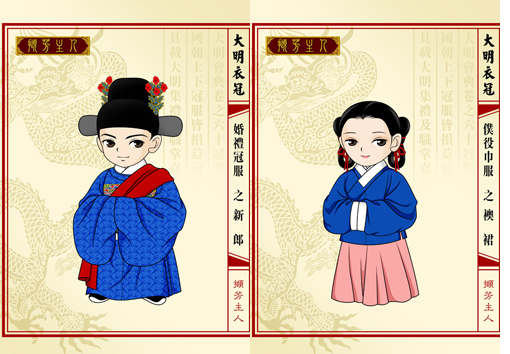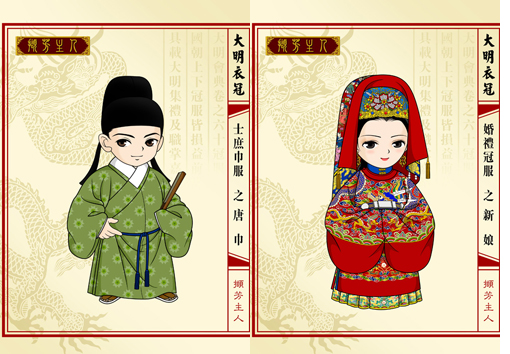
"Clothing of the Han people" refers to the historical(pre-17th century)clothing of the Han Chinese, the predominant ethnic group of China.
Han Clothing, worn by Han Chinese people from the semi-legendary Xia Dynasty (c. 21st century BC - 16th century BC) to the Ming Dynasty (1368-1644),has a recorded history of more than 3000 years.
Qipao and Tangzhuang, although usually regarded as traditional Chinese clothing, are not regarded as Hanfu by advocates of Hanfu revival. This is because these were introduced by the Manchus, whom revival advocates accuse of having stamped out Hanfu in the first place. Qipao and Tangzhuang are also relatively recent clothing styles, and cannot represent the entire history of Chinese clothing.

Many traditional costumes of Asian countries, such as the kimono in Japan, along with the traditional dresses Korean Hanbok and Vietnamese ao dai, are derived from Hanfu and have the same style as Hanfu. In contrast to China, Japanese and Korean traditional dress have been preserved over the centuries, and are close to what pre-Manchu Hanfu looked like.
Han Clothing was regarded by Han Chinese as a very important part of their culture. The wearing of appropriate styles of Han Clothing was an important part of courteous refined behaviour. Confucius considered Han Clothing a very important part of Chinese ceremony and ritual and many of his quotations contain references to Hanfu.
The Han nationality is the most populous nationality both in China and in the world. Its history is of long standing and its culture is resplendent. From the history of thousands of years,you may see there are chiefly two basic forms in design of the clothing of the Han nationality: the upper coat plus the lower skirt, and the combination between the coat and the skirt; the dajin(front of a Chinese garment which buttons on the right) has remained to be the most striking feature.
The main raw materials of Han clothes include flax, silk, cotton, woolen cloth, leather and so on. The products of dyeing and weaving of the Han nationality are unique in the world and enjoy a high reputation for their long history, advanced technology and elegant fashioning. For quite a long time in history, the dyeing and weaving technology,especially in silk weaving,could not be found elsewhere in the world.
The ancient staining technique of China was very superb and advanced,too: not only the colors were many and gorgeous, but the dyeing was fast, not easy to wade. Thus, it was called the mystical“Chinese art”by Westerners. The methods are roughly classified into the four types: inweaving, dye printing, embroidery and pattern drawing.
After the Revolution of 1911, the chief types of clothes of the male of the Han nationality were changpao(long gown) plus magua(mandarin jacket), changpao plus kanjian(sleeveless jacket), Sun Yat Sen's uniform, school wear and western-style clothes, etc. On the other hand, Chinese-style shan'ao(coat) and mindangku (trousers with the waist tucked together without button) were the major garments of the laboring people. Such a difference resulted from different economic conditions and ways of life.
In that period, women's clothes were chiefly qipao, kanjian, upper coat with lower skirt, and trousers.